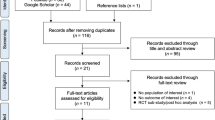Summary
The pharmacokinetics of the bisphosphonate drug pamidronate (APD, 3-amino-1-hydroxypropylidene-1,1-bisphosphonate) have been investigated in the mouse by using 14C-APD and following the tissue concentrations for up to 90 days postdose. The accumulation of APD in bone was the highest of all tissues and was linear with increasing dose up to the maximum dose employed (30 mg/kg), which is indicative of the uptake process being a simple chemical phenomenon. Despite the known effects of APD on bone turnover rates and osteoclast activity, the dose appeared to have no significant influence on the biological half-life of APD in bone which was found to be 90–140 days. A high dose of APD (5 mg/kg) appeared to prolong its uptake phase by bone, however, a net movement of APD from the soft tissues is the likely explanation for this finding. The concentrations of APD in the soft tissues investigated (liver, spleen, kidney, lung, and muscle) declined in a biphasic manner, initially in parallel with the fall in the plasma concentration and followed by a gradual fall in APD's concentration in the soft tissues due to renal elimination and a redistribution favoring the calcified tissues. The liver and spleen contained higher concentrations of APD relative to the other soft tissues. The 0–24 hour renal excretion of APD was found to fall with increasing dose above 2.5 mg/kg; this may be due to either nephrotoxicity or increased uptake by soft tissues. For doses over 20 mg/kg, there was some evidence of nephrotoxicity. The data from these studies have been used to formulate a simple physiological model for APD disposition.
Similar content being viewed by others
References
Frijlink WB, Bijvoet OLM, te Velde J, Heynen G (1979) Treatment of Paget's disease with 3-amino-1-hydroxy-propylidene-1,1-bisphosphonate (APD). Lancet i:799–802
Cantrill JA, Buckler HM, Anderson DC (1986) Low dose intravenous 3-amino-1-hydroxypropylidene-1,1-bisphosphonate (APD) for the treatment of Paget's disease of bone. Ann Rheum Dis 45:1012–1018
Reid IR, King AR, Alexander CJ, Ibbertson HK (1988) Prevention of steroid-induced osteoporosis with (3-amino-1-hydroxyprophylidene)-1,1-bisphosphonate (APD). Lancet i:143–146
Jung A (1982) Comparison of two parenteral diphosphonates in hypercalcaemia of malignancy. Am J Med 72:221–226
Recker RR, Saville PD (1973) Intestinal absorption of disodium ethane-1-hydroxy-1,1-diphosphonate (disodium etidronate) using a deconvolution technique. Toxicol Appl Pharmacol 24:580, 589
Fogelman I, Smith L, Mazess R, Wilson MA, Bevan JA (1986) Absorption of oral diphosphonate in normal subjects.Clin Endochrinol 24:57–62
Wingen F, Schmdhl D (1987) Pharmacokinetics of the osteotropic diphosphonate 3-amino-1-hydroxypropane-1,1-bisphosphonic acid acid in mammals. Arzneim-Forsch/Drug Res 37:1037–1042
Mvnkenvn J, Ylitalo P, Elo HA, Airaksinen MM (1987) Distribution of [14C]clodronate (dichloromethylene bisphosphonate) disodium in mice. Toxicol Appl Pharmacol 89:287–292
Michael WR, King WR, Wakim JM (1972) Metabolism of disodium ethane-1-hydroxy-1,1, diphosphonate (disodium etidronate) in the rat, rabbit, dog and monkey. Toxicol Appl Pharmacol 21:503–515
Fleisch H (1981) Diphosphonates: history and mechanisms of action. Metab Bone Dis Rel Res 4,5:279–288
Fleisch H (1980) Experimental basis for the clincal use of diphosphonates in Paget's disease of bone. Arth Rheum 23:1162–1170
Troehler U, Bonjour J-P, Fleisch H (1975) Renal secretion of diphosphonates in rats. Kidney Int 8:6–13
Cal JC, Daley-Yates, PT (1990) Disposition and nephrotoxicity of 3-amino-1-hydroxypropylidene-1,1-bisphosphonate (APD) in rats and mice. Toxicology 65:179–197
Author information
Authors and Affiliations
Rights and permissions
About this article
Cite this article
Hoggarth, C.R., Bennett, R. & Daley-Yates, P.T. The pharmacokinetics and distribution of pamidronate for a range of doses in the mouse. Calcif Tissue Int 49, 416–420 (1991). https://doi.org/10.1007/BF02555853
Received:
Revised:
Issue Date:
DOI: https://doi.org/10.1007/BF02555853




